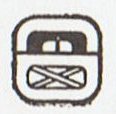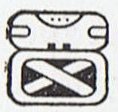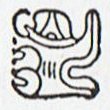9. Although the cycle of Moon every month makes her vanish in night 29 (to 'die') and although it should be a normal thing (like menstruation, vari) it anyhow caused the women to react strongly, their departed men did not return: ... When the new moon appeared women assembled and bewailed those who had died since the last one, uttering the following lament: 'Alas! O moon! Thou has returned to life, but our departed beloved ones have not. Thou has bathed in the waiora a Tane, and had thy life renewed, but there is no fount to restore life to our departed ones. Alas ... Worse should be the 'death' of Sun because a long winter caused hunger (haka oge kai). ... Rehua had two wives, the stars on either side of Antares. One was Ruhi-te-rangi or Pekehawani, the personification of summer languor (ruhi), the other Whaka-onge-kai, She-who-makes-food-scarce before the new crops can be harvested. I guess strategies were created to cope with it. There could, for instance, have been a practise to count only 20 of the days in the month: ... The Gilbert Islanders are Polynesians, having emigrated, according to their traditions, from Upolu, Samoa, which they look upon as te buto (Maori pito), the Navel of the World. They never counted the nights of the Moon beyond the twentieth, so far as Grimble was able to ascertain ... With only 20 days to count in a month it will be necessary to count for 18 months in order to reach 360:
The Mayas had shortened their months, but suppose more observant people knew the synodical month stretches for 29½ nights. It would result (if counting could be done only by using your fingers and toes) in a Moon-determined calendar with 18 * 29½ = 531 nights. The glyph number at Kuukuu (at the star Heap of Fuel) was presumably identified with the end of such a Moon year:
Number 531 seems otherwise to be rather opaque, not showing any obvious traits worth mentioning. 531 = 3 * 177. The discovery just made, how the death of Kuukuu (the strong Mars boy, able to lift the sky roof in spring) seems to come with day 531 makes sense, because early I have found 531 to be connected with the end of summer. This is the summary at pare in my preliminary glyph type dictionary:
|
||||||||||||||||||||||||||||||||||||||||||||||||||||||||||||||||||||||||||||||||||||||||||||||||||||||||||||||||||||||||||||||||||||||||||||||||


























